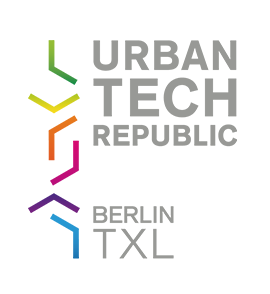The aim of this use case is to develop and launch an AI model that processes aerial images so that they meet the demands of the General Data Protection Regulation (GDPR).
Background: In the high-resolution aerial photographs generated during drone flights, it is possible to identify vehicles, but also people. These images have to be edited, as many specialist stakeholders and partners are interested in using them for planning, construction, sales or documentation, for example. Furthermore, the idea is for them to be able to be made available to the public.
To anonymize the images, the personal data in the aerial photographs is first identified and highlighted using AI. This involves defining objects (categories) that relate to people (e.g. buses, cars, construction machinery, bicycles, etc.) and training the AI to recognize them more successfully.
After that, the objects identified in the individual images are disguised by blurring and the aerial images are therefore GDPR-compliant. Finally, an overall image is created from the anonymized individual images.
A process is currently being implemented to enable the overall image to be made available in the geoportal to a specific user group in a protected data room. At the same time, the AI is being trained and optimized further and a process developed for automatically anonymizing aerial images and integrating them into the geoportal.
